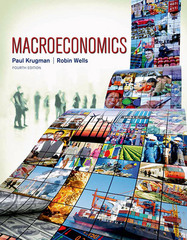Question
1.In the case of a negative externality, the Select one: a. producer ignores social costs. b. producer ignores private costs. c. producer's price reflects total
1.In the case of a negative externality, the
Select one:
a. producer ignores social costs.
b. producer ignores private costs.
c. producer's price reflects total costs.
d. producer's price reflects only social costs.
e. producer's price reflects social and private costs.
2.One of the limitations of the Coase theorem is that it
Select one:
a. works best when there are a large number of firms and producers.
b. assumes large transaction costs.
c. holds only when property rights are held in common.
d. breaks down when transactions costs are higher.
e. requires government to be perfectly informed.
3.In making their consumption decisions, individuals consider
Select one:
a. private costs and social benefits.
b. social benefits and private costs.
c. private costs and private benefits.
d. social benefits and social costs.
e. positive and negative externalities.
4.In making their production decisions, firms consider
Select one:
a. social benefits and private costs.
b. private costs and social benefits.
c. social benefits and social costs.
d. private costs and private benefits.
e. positive and negative externalities.
5.In the case of a negative externality,
Select one:
a. private costs exceed social costs, but the producer takes account of only the private costs.
b. social costs exceed private costs, but the producer takes account of only the private costs.
c. private costs are less than social costs, but the producer takes account of social and private costs.
d. social costs exceed private costs, but the producer takes account of only the social costs.
e. private costs exceed social costs, but the producer takes account of only the social costs.
6.Whenever individuals suffer extra costs they did not personally incur, this is referred to as
Select one:
a. a public good.
b. a negative externality.
c. a transaction cost.
d. a positive externality.
e. adverse selection.
7.If there are negative externalities associated with the production of a good and the government imposes a policy that forces producers to pay these costs, the equilibrium price
Select one:
a. will rise and the equilibrium quantity will fall.
b. will fall and the equilibrium quantity will increase.
c. and the quantity will both fall.
d. and the quantity will both increase.
e. will rise but the change in quantity will be indeterminate.
8.Market failure refers to
Select one:
a. an unequal division of resources between the private and public sectors.
b. the market process that does not yield any useful outcomes.
c. a market-based allocation of scarce resources that is inefficient.
d. an unequal distribution of income.
e. a failure to detect any problems with the competitive market economy.
9.Direct government controls to combat negative externalities tend to be inefficient because
Select one:
a. the costs of pollution abatement are identical for all sectors
b. firms will not abide by the rules established by the government
c. it is difficult to determine who is causing pollution
d. firms with different costs are faced with the same regulation
e. producers will adopt efficient methods of dealing with the controls
10.The fundamental objective of government, when it attempts to deal with a negative externality, is to
Select one:
a. eliminate social costs.
b. provide an incentive for the decision makers to consider all costs.
c. eliminate the activity that has caused the externality.
d. reduce social costs to equality with private costs..
e. eliminate private costs.
Step by Step Solution
There are 3 Steps involved in it
Step: 1

Get Instant Access to Expert-Tailored Solutions
See step-by-step solutions with expert insights and AI powered tools for academic success
Step: 2

Step: 3

Ace Your Homework with AI
Get the answers you need in no time with our AI-driven, step-by-step assistance
Get Started


